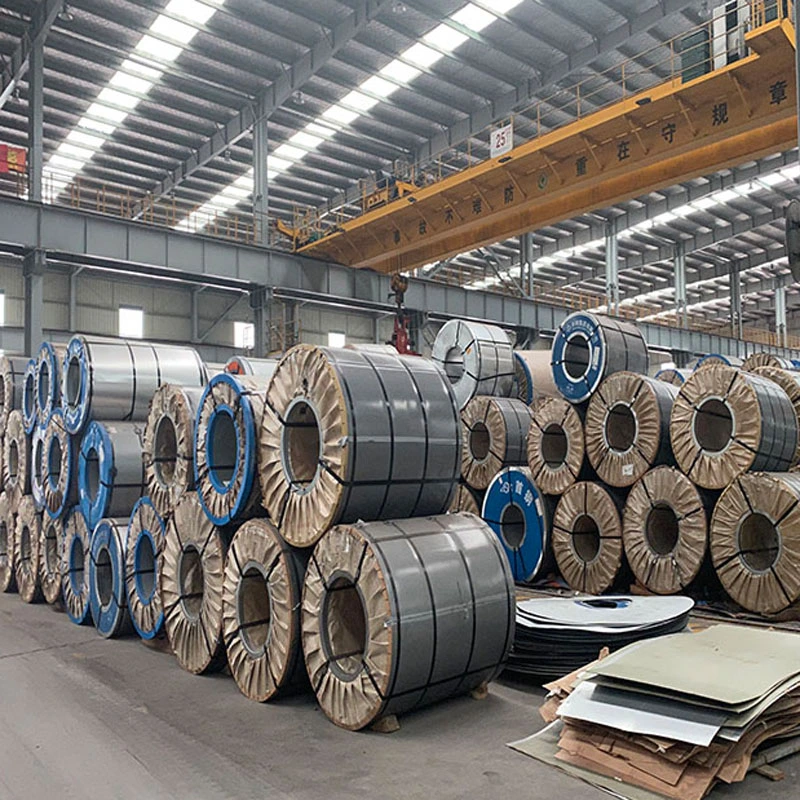How much do you know about cold-rolled steel plate SPCC?
2023-03-31
What is cold rolled carbon sheet ?
Cold rolled carbon steel is a steel that has been treated at room temperature to increase its strength and durability. The steel is processed through the rollers at a temperature below its recrystallization temperature, which makes it stronger and more uniform in thickness. The cold rolling process also produces a smoother surface finish than hot rolled steel.
Carbon steel is a steel with carbon as the main alloying element. The carbon content in carbon steel can vary, but is usually between 0.05% and 2.0%. Known for its strength, hardness and durability, carbon steel is commonly used in applications such as construction, automobile manufacturing and machinery.
Cold rolled carbon steel plates are commonly used in applications requiring a smooth surface finish and precise dimensions. It is commonly used to make appliances, auto parts, electronic components, and building materials like roofing and siding. Cold-rolled carbon steel sheets are also frequently used as a base material for galvanized or coated steel products, used in a variety of industries.
About SPCC
SPCC is a cold-rolled steel sheet material specified in Japanese Industrial Standards (JIS G 3141), which stands for “Steel Plate Cold Rolled Commercial”. SPCC steel is a common cold-rolled low-carbon steel plate, usually used in some applications that require high material strength and surface finish, such as electrical appliances, auto parts, office furniture, plumbing, etc.
The chemical composition of SPCC steel requires a carbon content of no more than 0.15%, and requires that the steel plate has a high surface finish and no obvious defects on the surface, such as cracks, creases, wrinkles and rust. In addition, SPCC steel plates also need to undergo specific cold rolling processes and treatments to ensure the stability and reliability of their mechanical properties and surface quality.
It should be noted that although the quality standards of SPCC steel are specified by Japanese Industrial Standards, this steel is also widely used globally, so its application and quality standards may vary by region and industry.
Chemical composition of SPCC
The chemical composition of SPCC carbon steel plate is as follows:
Carbon (C): 0.15% max.
Manganese (Mn): 0.60% max.
Phosphorus (P): 0.050% max.
Sulfur (S): 0.050% max.
Note that the exact chemical composition of SPCC carbon steel plates may vary slightly due to manufacturing processes and specific product specifications.
The low carbon content of SPCC carbon steel plate is important because it makes the material less prone to rust and corrosion. The presence of manganese helps to increase the strength and hardness of the material, while low levels of phosphorus and sulfur help prevent brittleness and cracking during manufacturing.
In addition to these elements, SPCC carbon steel plates may also contain trace amounts of other elements, such as silicon, copper, nickel, etc., depending on specific product requirements. However, these elements usually make up only a small portion of the overall composition.
Mechanical properties of SPCC
The mechanical properties of SPCC carbon steel plates depend on many factors, including the manufacturing process, specific product specifications, and the heat treatment performed on the material. However, here are some typical mechanical properties of SPCC carbon steel plates:
Tensile Strength: 270-410 MPa (39,000-59,000 psi)
Yield Strength: 240-370 MPa (35,000-53,000 psi)
Elongation: 28-34%
Hardness (Brinell): 50-71 HB
Please note that these values are for general guidance only and may vary depending on specific product specifications and manufacturing processes used to produce materials.
In general, SPCC carbon steel plates have good strength and ductility, making them suitable for a wide range of applications. The material’s low yield strength means it can be easily shaped and made into a variety of products. The elongation of SPCC carbon steel plate indicates that the material can be stretched or bent without cracking or breaking, which is important in many manufacturing applications. SPCC carbon steel plates are relatively low in hardness and easy to machine and process, but are also prone to surface damage or wear over time.
What are the applications of SPCC carbon structural steel plates?
SPCC carbon structural steel plate has a wide range of applications due to its excellent processability, ductility and other properties. Here are some common uses of SPCC carbon structural steel plates:
Automobile industry: SPCC carbon structural steel plates are used to manufacture various auto parts, such as body panels, chassis, suspension components, etc.
Electrical appliances: SPCC carbon structural steel plates are used to produce electrical appliances, such as refrigerators, air conditioners, washing machines, etc.
Construction materials: SPCC carbon structural steel plates are used in the construction industry to manufacture building components such as roof panels, wall panels and steel studs.
Metal furniture: SPCC carbon structural steel plate is used to produce metal furniture, such as desks, chairs, tables, etc.
Container: SPCC carbon structural steel plate is used to manufacture various containers, such as storage tanks, shipping containers, etc.
Industrial equipment: SPCC carbon structural steel plate is used to produce various industrial equipment, such as pumps, valves, gears, etc.
To sum up, SPCC carbon structural steel plate has a wide range of uses due to its excellent processability, ductility and other properties. They are used in various industries such as automotive, construction, appliances, metal furniture, containers and industrial equipment
